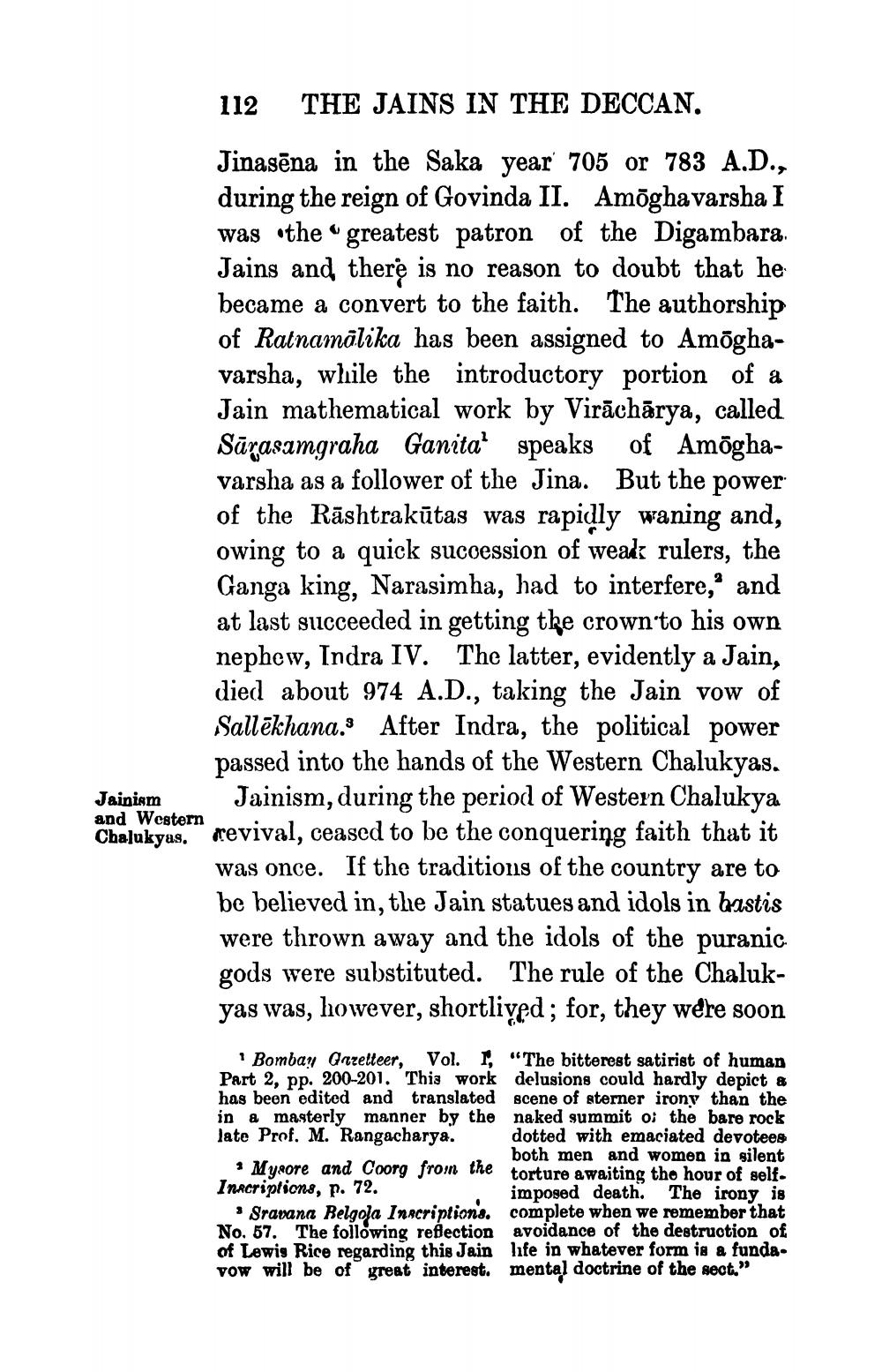________________
112
THE JAINS IN THE DECCAN.
Jinasēna in the Saka year 705 or 783 A.D., during the reign of Govinda II. Amõghavarsha I was the greatest patron of the Digambara. Jains and there is no reason to doubt that he became a convert to the faith. The authorship of Ratnamõlika has been assigned to Amõghavarsha, while the introductory portion of a Jain mathematical work by Virācharya, called Sāgasamgraha Ganita' speaks of Amõghavarsha as a follower of the Jina. But the power of the Rāshtrakūtas was rapidly waning and, owing to a quick sucoession of weak rulers, the Ganga king, Narasimha, had to interfere, and at last succeeded in getting the crown to his own nephew, Indra IV. The latter, evidently a Jain, died about 974 A.D., taking the Jain vow of Sallēkhana. After Indra, the political power
passed into the hands of the Western Chalukyas. Jainism Jainism, during the period of Western Chalukya and Western Chalukyas.
revival, ceased to be the conquering faith that it was once. If the traditions of the country are to be believed in, the Jain statues and idols in bastis were thrown away and the idols of the puranic gods were substituted. The rule of the Chalukyas was, however, shortlived; for, they were soon
1 Bombay Gazetteer, Vol. 1, "The bitterest satirist of human Part 2, pp. 200-201. This work delusione could hardly depict & has been edited and translated scene of sterner irony than the in a masterly manner by the naked summit of the bare rock late Prof. M. Rangacharya. dotted with emaciated devotees
both men and women in silent Mysore and Coorg froin the torture awaiting the hour of selfInscriptions, p. 72.
imposed death. The irony is * Sravana Belgola Inscriptions complete when we remember that No. 57. The following reflection avoidance of the destruction of of Lewis Rice regarding this Jain life in whatever form is a fundaVow will be of great interest. mental doctrine of the sect."




